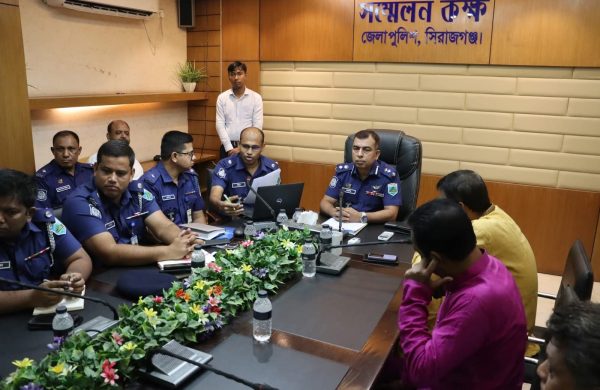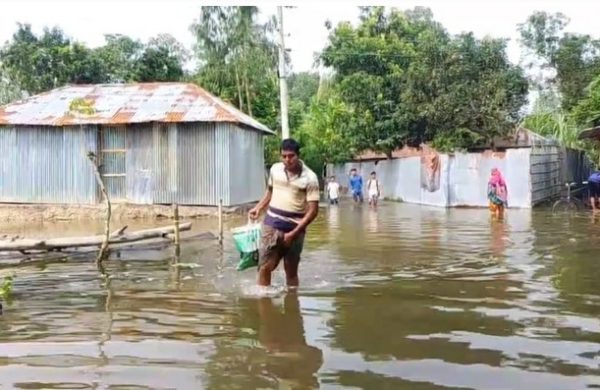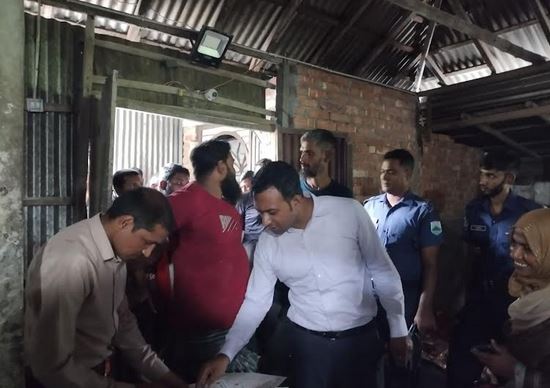Major reasons for recurring floods in Bangladesh
- Update Time : Tuesday, September 3, 2024

–Sk Abu Jahid–
Police among 95 killed across countryFlooding is a recurrent natural disaster in Bangladesh, significantly affecting the country’s socio-economic landscape. August 2024 brought another severe flash flood, marked by widespread devastation and displacement. This event underscored the vulnerabilities of Bangladesh to natural disasters, particularly floods, and highlighted areas where improvements are necessary to mitigate future risks.
The flooding in August 2024 resulted from a confluence of meteorological, hydrological, and anthropogenic factors, each exacerbating the other to create a disaster of significant magnitude. Primarily, the most immediate cause of the flooding was the unusually heavy rainfall experienced in Bangladesh and its neighboring regions, particularly in the Indian state of Tripura. Bangladesh often experiences monsoon rains between June and October, but the intensity and volume of the rains in August 2024 were far beyond the usual levels.
Due to a low-pressure system in India’s Tripura state, rain began on August 19, and by August 20, the rainfall had significantly increased. In these areas, 150 to 300 millimeters of rain was recorded on that day. In Comilla, 210 millimeters of rain was recorded, while in Amarpu (in the upper Gomati catchment area) it was 267 millimeters, and in Parshuram near the Muhuri River, it was 304 millimeters. Although the rainfall decreased slightly on August 21, it picked up again in the last 24 hours. This has led to severe flooding in Feni and Comilla districts of Bangladesh through the Muhuri, Feni, and Gomati rivers, most of whose catchment areas are located in Tripura.
Additionally, the rainfall within Bangladesh has further exacerbated the situation.Next, inadequate river management practices further contributed to the severity of the flooding. Bangladesh’s river systems are complex and require constant monitoring and maintenance to prevent flooding. However, issues such as siltation, encroachment, and unregulated construction along riverbanks have reduced the capacity of rivers (Muhuri, Feni, and Gomati) to hold and channel water effectively that means the rivers. This led to the rivers breaching their banks and flooding nearby areas.
Moreover, in many parts of Feni and Comilla, the drainage systems are either outdated or poorly maintained, leading to waterlogging and prolonged flooding. The slow drainage of floodwaters prolonged the suffering of affected communities, disrupted transportation, and hindered relief efforts. This issue highlights the need for significant improvements in urban planning and infrastructure development to handle extreme weather events. Lastly, the flooding is not uncommon in Bangladesh, but some particular areas that had not experienced such severe flooding before.
The August 2024 floods serve as a stark reminder of the need for comprehensive flood management strategies in Bangladesh. To mitigate the impact of future floods, several lessons can be learned, and proactive measures must be implemented. First of all, one of the most critical areas for improvement is the accuracy and timeliness of meteorological forecasting. Enhancing forecasting capabilities, particularly in predicting extreme weather events, is essential for giving communities and authorities more time to prepare.Investing in advanced weather prediction models, integrating real-time data from local and regional weather stations, and improving communication channels for disseminating warnings to at-risk populations are vital steps. As an upstream country, India needs to provide real-time hydro-meteorological data which can also improve the accuracy of forecasts and the effectiveness of early warning systems. There was a time when we didn’t receive such information.
However, it must be acknowledged that under a bilateral agreement, India has been supplying data from several of its water monitoring stations to Bangladesh for a couple of years. Secondly, given that most of the rivers causing floods in Bangladesh originate in neighboring countries because all most 93% catchment area is outside of the country. In this context, regional cooperation is essential for effective as well as efficient flood management. Strengthening bilateral agreements on water resource management, enhancing joint monitoring of river systems, and establishing protocols for sharing real-time data during the monsoon season can help both countries better manage flood risks. Additionally, engaging in regional dialogues through platforms like the South Asian Association for Regional Cooperation (SAARC) can facilitate the development of shared strategies for disaster risk reduction. Thirdly,effective river management is crucial for preventing floods. This includes regular dredging of rivers to prevent siltation, enforcing regulations against encroachment on riverbanks, and constructing and maintaining embankments and levees. The government must prioritize investments in these areas to enhance the capacity of rivers to manage heavy rainfall and reduce the risk of overflowing.
Community-based approaches, such as involving local leaders in planning and decision-making processes, can enhance the effectiveness of flood preparedness efforts. Establishing more flood shelters in vulnerable areas and ensuring that evacuation routes are well-planned and communicated to the public can also save lives during flood events. Additionally, integrating flood risk reduction into broader development programs can help build resilience in communities over the long term. Fifth one is that the August 2024 floods highlighted the inadequacies of drainage systems in many parts of Bangladesh, particularly in urban areas. Upgrading these systems to handle larger volumes of water is essential for preventing waterlogging and reducing the impact of floods. This includes expanding drainage capacity, improving maintenance practices, and ensuring that new developments are designed with flood risks in mind. Urban planning must also consider the increasing risk of extreme weather events due to climate change. Building codes and land-use planning regulations should be updated to ensure that new constructions are resilient to flooding. Additionally, creating more green spaces in urban areas can help absorb rainwater and reduce the burden on drainage systems.
Finally, climate change is expected to increase the frequency and intensity of extreme weather events, including floods, in Bangladesh. As such, it is crucial to incorporate climate change adaptation into all aspects of flood management. This includes designing infrastructure that can withstand future climate scenarios, implementing land-use practices that reduce vulnerability, and developing policies that promote long-term resilience. Besides, Research and innovation will play a key role in this effort. Investing in research to understand the impacts of climate change on rainfall patterns, river flows, and flood risks can inform better decision-making. Additionally, adopting new technologies, such as remote sensing and satellite monitoring, can enhance the ability to monitor and respond to floods in real time.
In conclusion, it can be articulated that the August 2024 floods in Bangladesh were a result of a combination of unprecedented rainfall, inadequate river management, poor drainage infrastructure, and a lack of preparedness in some areas. These factors converged to create a disaster that had a profound impact on the affected regions. However, the lessons learned from this event provide valuable insights into how Bangladesh can improve its flood management strategies in the future.By enhancing meteorological forecasting, strengthening river management and infrastructure, upgrading drainage systems, improving community preparedness, and fostering regional cooperation, Bangladesh can reduce the risk of future floods and build resilience to extreme weather events. Incorporating climate change adaptation into these efforts will also be essential for ensuring that the country is prepared for the challenges of a changing climate.
The writer is Director, Bangladesh Poribeshbid Society



















